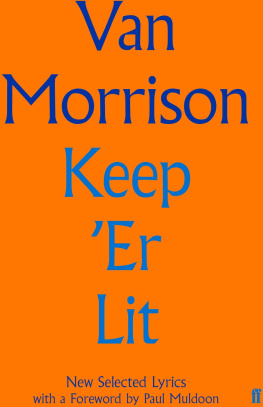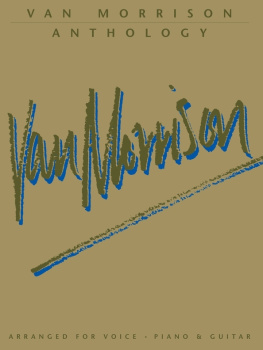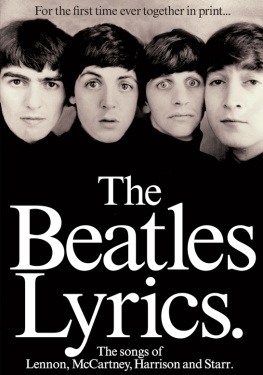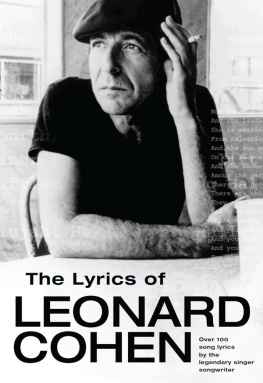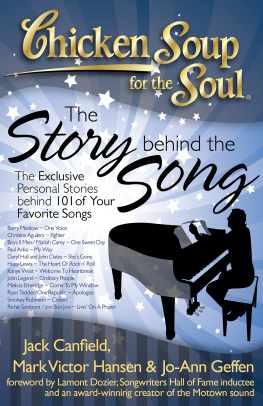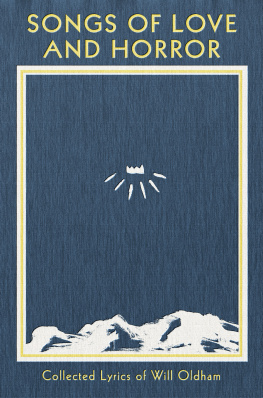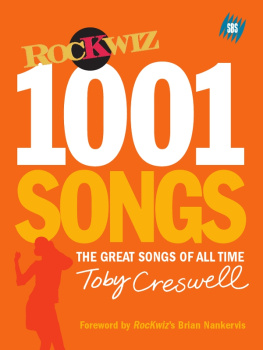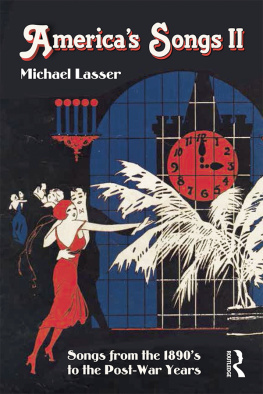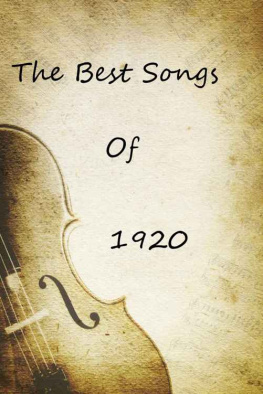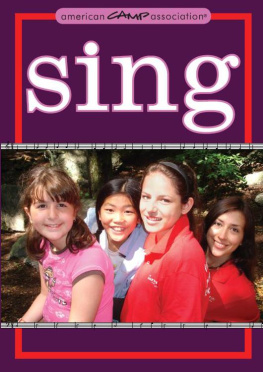The great artist is not only on the front line but engaged in single combat. The opponent is a version of himself and, almost inevitably, its a fight to the death. At the champions back is a wall of spearmen, cheering and jeering him on. Each of them bears a wound from him and has, in turn, given him a wound. Its often a spear-thrust to the heart, a spear-thrust all have somehow survived. Some of the spearmen at Van Morrisons back were conscripted by his father, George, who had spent time in Detroit in the early 1950s and accumulated a substantial record collection from Solly Lipsitzs record shop (Atlantic Records) in Belfasts Smithfield market.
Muddy Waters, Charlie Parker, Mahalia Jackson, Woody Guthrie, Hank Williams, Sonny Terry and Brownie McGhee, John Lee Hooker, Lead Belly. Like many great artists, Van Morrison seems to lend credibility to the notion of the 10,000 hours of limbering up they put in before reaching their full potential and coming into their own. Its a phenomenon made popular by Malcolm Gladwell in Outliers. In fact, Ive heard Van refer to Malcolm Gladwell as he talks about serving his time, from the age of twelve, in the business of writing and performance. Between 1957 and 1964, he was involved with at least a dozen bands. I first heard a recording of Van Morrison in 1964 when he was the lead singer of Them. I didnt know at the time the name of that band was pilfered from a Melody Maker ad for a group called Shorty and Them.
I assumed the band name was primarily a version of the Northern Irish representation of otherness themuns. From the outset, Van Morrison seemed at once familiar and foreign, a straddler of traditions, skiffle and street scuffle, a Belfast boy who might have grown up on a bayou or on the Bowery or playing boogie-woogie. No wonder a 1992 recording of Van singing Gloria with John Lee Hooker still seems the most natural thing in the world. By the time I myself moved to Belfast, in 1969, Van Morrison was a bona fide solo star. His classic album, Astral Weeks, was simply left on the record player, like a frying pan on a hot plate, in countless student digs. I had a particular affection for Madame George, of course, particularly since in 197273 I lived in a spectacularly rundown student house at 124 Fitzroy Avenue and had the shock of recognition when a great artist stakes out his territory and, more importantly, allows the listener or reader to sublet.
The detailing of Belfast life has seen Van Morrison no less to the fore than Ciaran Carson or Derek Mahon or Michael Longley, particularly when it comes to representing a sense of wonder: Wee Alfie at the Castle Picture house On the Castlereagh Road Whistling on the corner next door where He kept Johnny Mack Browns horse O Sole Mio by McGimsey And the man who played the saw Outside the City Hall Pastie suppers down at Davys Chipper, Gravy Rings, Wagon Wheels, Barmbracks, Snowballs As Van Morrisons career developed he was able to take in Belfast no less readily than Beale Street, Irish diddley-dow-diddley no less readily than Bo Diddley. The Irishness of his work is evident from the very localised vocabulary of one of my favourites: Goin down to Monte Carlo about 25k from Nice Goin down to Monte Carlo about 25k from Nice Got to get myself together, gotta get my head some peace Its the blues line typified by Goin Down to Monte Carlo, even more than soul or funk, thats the most common driving force in Van Morrisons music and lyrics. At the heart of the blues is the couplet, the mainstay of poetry in English from Chaucer through Dryden, Pope, Byron, Yeats and Owen to Eminem and Kendrick Lamar. Its a template that allows Van Morrison the flexibility to range over subject matter as diverse as the solid ground / In the County Down, the vicissitudes of the music business scene, the delighting in the music itself: And it stoned me to my soul Stoned me just like Jelly Roll My own personal relationship with Van Morrison, which I feel obliged to acknowledge here, has developed only over recent years and is based on good-humoured banter and mutual contrariness, the very frequent wonderful remark and considerable soul searching on whether there is, indeed, any fun to be had. Van Morrison continues to embody a parade of paradoxes; he is a very successful businessman who hates business, a celebrity who disavows celebrity culture, a supreme showman who is, as they say, pathologically shy. I can tell you that, when I attended his seventieth birthday party, I stayed later than he did.
As to those who might be exercised by the question of Whatever Happened to PJ Proby?, I can also tell you I last spotted a very intact PJ at that same party. One dominant theme in Van Morrisons work is the seamless relationship between things Celtic and the occult. In this he traces his line back through William Butler Yeats to William Blake. Indeed, some of the best of his songs sound as if theyve been channelled through Yeats or Blake or Wordsworth:
The mountain air was fresh and clear The sun was up behind the hill It felt so good to be alive On that morning in spring I want to sing this song for you I want to lift your spirits high And in my soul I want to feel The beauty of the days gone by
One of the things that makes an artist great is their recognition not only of the significance of their serving time in the writers trade as if one were a riveter, say, or a rat-catcher but their recognition also that they are merely conduits for a force beyond themselves. In fact, its the combination of these two seemingly contradictory positions that may be discerned in the most successful musicians and writers. This is the single greatest lesson to be learned from Lonnie Donegan and John Donne, Big Bill Broonzy and Rabbie Burns.
As Van Morrison has himself put it: I write from a different place. I do not even know what it is called or if it has a name. Its this mix of genuine humility and hard-won hubris, of mysticism and technical mastery, that makes Van Morrison quite simply, and quite indisputably, The Bard of Belfast.
Van Morrisons status as an original is assured. In his early work with Them he led one of the great bands to emerge from the British blues boom, kickstarted the pop and rock scene in Ireland, and also wrote songs that have not just endured but entered the canon of popular music. Striking out on his own he then changed the way that music sounded by ignoring the lines along which it had been developing in favour of his own unique combination of sounds and words.
Since then he has continued to move restlessly across forms and genres, rarely feeling any need to conform to prevailing fashions or values in either his words or his musics (and the plural is appropriate). Anyone looking for patterns in his work will quickly recognise that the overarching pattern is of disruption. As soon as he has established a sound or a set of concerns, he moves on to something different. In doing so he has produced songs that are simply necessary in the lives of the many people who use them to mark the significant moments both joyful and melancholy in their lives. This is the second volume of Van Morrisons selected lyrics and it aims, like its predecessor, Lit Up Inside (2014), to provide a representative sample of his work. Just flicking through the book and noticing the different shapes of the songs gives an immediate sense of the many different ways that Morrison has approached the art of songwriting from tightly controlled early lyrics through more free-flowing songs or even spoken word pieces into what look like more conventional song structures.
Taken together the two volumes give an overview of his work over some fifty years as a songwriter. The arrangement here is once again broadly chronological and the songs again cover a range of themes, topics, places, and people that manages to be both extensive and concentrated. Van Morrison has both extended the range of, for want of a better term, the popular song and equally he has established and returned to a core set of concerns and interests throughout his career. Even a partial list of his recurrent interests is still extensive. It would have to include love songs, work songs (about both physical work and the work of being a songwriter), songs about the pains and anxieties of existence, songs of consolation, songs about various kinds of spiritual quest and the realms of the mystical, and songs which deal with healing and reconciliation both with the self and with others. Then there are the songs of memory and of childhood; songs about the natural world (natures bright green shady path as its called in Rave On, John Donne) and about the perspectives it can provide on time, which can exist both in various secular forms (the seasons, times of day) and

